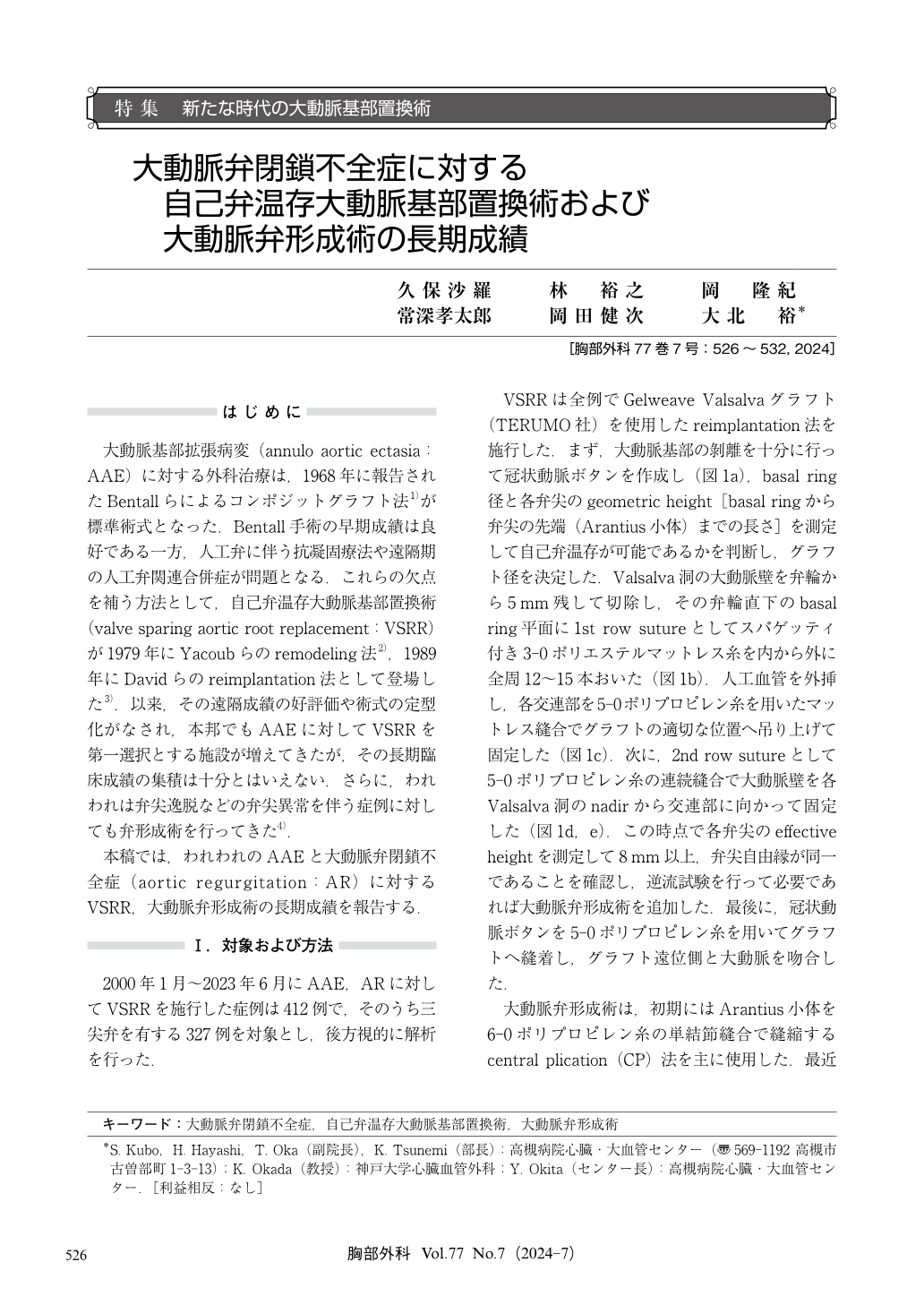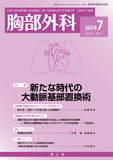Japanese
English
- 有料閲覧
- Abstract 文献概要
- 1ページ目 Look Inside
- 参考文献 Reference
大動脈基部拡張病変(annulo aortic ectasia:AAE)に対する外科治療は,1968年に報告されたBentallらによるコンポジットグラフト法1)が標準術式となった.Bentall手術の早期成績は良好である一方,人工弁に伴う抗凝固療法や遠隔期の人工弁関連合併症が問題となる.これらの欠点を補う方法として,自己弁温存大動脈基部置換術(valve sparing aortic root replacement:VSRR)が1979年にYacoubらのremodeling法2),1989年にDavidらのreimplantation法として登場した3).以来,その遠隔成績の好評価や術式の定型化がなされ,本邦でもAAEに対してVSRRを第一選択とする施設が増えてきたが,その長期臨床成績の集積は十分とはいえない.さらに,われわれは弁尖逸脱などの弁尖異常を伴う症例に対しても弁形成術を行ってきた4).
We reported our long-term results of valve sparing aortic root replacement (VSRR) and aortic cusp repair for aortic regurgitation (AR) were satisfactory. Three hundred twenty-seven patients had VSRR, and 164 patients of them had aortic cusp repair for prolapse. At 10 years after the operation, the overall survival was 91.5%, the freedom from more than mild recurrent AR was 71.2%, and the freedom from aortic valve reoperation was 82.0%. As for the aortic cusp repair technique, there was no significant difference in the mid-term results of the recurrent AR and reoperation for the aortic valve between the central plication technique and the resuspension technique (two layers of continuous mattress sutures placed the entire length of the free margin of the aortic cusp). The resuspension technique might be useful for repairing the aortic cusp with prolapse. Furthermore, among the patients with acute aortic dissection, connective tissue disease, or aortitis, the long-term results of VSRR and aortic cusp repair were also satisfactory.

© Nankodo Co., Ltd., 2024


